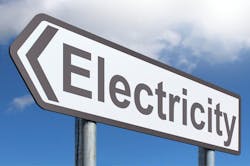Governments around the world are announcing bans or restrictions on new gasoline vehicles as early as 2025 in favor of electric vehicles (EVs). Extreme fast charging (XFC), which involves charge rates of 350 kW and above, has been touted as a key to achieving substantial EV adoption by the general public. However, modern grid infrastructures are not designed to supply electricity at this rate. Costly grid upgrades would be required unless an alternative and cost-effective solution can be used to buffer the grid.
There are grid storage systems that use new technology able to be installed at filling stations, truck stops, and other sites and connected to high-rate DC chargers that could charge EVs from the stored energy at the 350 kW rate. Energy storage might bring to mind batteries and ultracapacitors. Each has its pros and cons, but the following will explain how the production of two substances—nanostructured carbons and ionic liquid-based electrolytes—are key to next-gen batteries. This has resulted in the development of a fundamentally new type of cell.
For more information on fast charging, checkout this PDF from the Department of Energy
ZapGo technology enables aging grid infrastructure to support electric vehicle (EV) fast charging. Charging units installed at filling stations could be outfitted with Carbon-Ion (C-Ion) cells. The chargers would store electric energy at night and off-peak to provide EV drivers with cost-effective electricity. Vehicles will then be charged from the stored energy, not directly from the grid.
How Do Extreme Fast Charging Cells Work?
Recent advances in producing and fabricating a range of nanostructured carbons and ionic liquid-based electrolytes have shown the feasibility of combining the power density of supercapacitors and the energy density of rechargeable batteries. The resulting cells work in a very similar way to electrostatic double-layer capacitors but use different carbon and electrolyte materials that are not only safer and easier to recycle at the end of life, but also enable the devices to operate at higher voltages, resulting in higher energy densities.
The traditional supercapacitor design envisages transport of charge carriers and ions in 2D geometry, and an ion in one of the electrodes located closely to the current collector has to migrate through the entire electrode and separator material to reach the other electrode to form the electrical double layer while being charged. The thickness of the carbon electrode is ~150 microns and the separator is ~20 microns. It is a tortuous path for the ion to move from one electrode to the other.
By using synthetic carbons and nanocarbons, it is possible to fabricate electrodes with controlled porosity. The amount of electrical energy that can be stored in a cell is dependent on the surface area and electrical conductivity of the electrode, as well as the operating voltage of the electrolyte. In recent years, advances in nanostructured carbons as electrodes and non-flammable ionic liquids as electrolytes have significantly enhanced the performance.
Featuring higher energy densities than those presented by conventional supercapacitors, and with charging rates 10 times faster than current superchargers, the extreme fast charging cells can be used either on their own or in combination with lithium-ion batteries for a range of applications—such as storing energy rapidly in EVs and their charging stations.
Incorporating Extreme Fast Charging Cells Into Charging Stations
Currently, there is a proposition to set up a network of 500 ultrafast-charge charging points at filling stations across the UK to enable fast charging of EVs. In total, it would allow a 500 MWh electrical storage capacity. In addition, Norway has announced agreements regarding the adoption of XFC grid storage systems. For the purpose of illustration, this article will focus on UK statistics.
For context, it’s worth noting that the UK has around 8,500 filling stations for approximately 38 million road vehicles, most of which use gasoline or diesel. With a substantial decrease in the number stations over the past 20 years, the current stations are in prime locations whose business model business models rely on high turnover and quick throughput.
Most servicing stops last 5 to 10 minutes, including filling up with fuel and visits to the onsite store. Drivers may also use additional services offered at the stations. These existing sites are proven to be convenient, and would be ideal locations for public charge points. As drivers of electric cars will still want to use the services available at the sites, they also want the convenience of the 5- to 10-minute familiar visit experience. What drivers do not want, nor does the service station operator, is for their visit to take hours while waiting to recharge an electric vehicle, which is what they would fact take today.
If an EV is slow-charged over an eight-hour period, then a single charge point can only be used by three vehicles a day. Therefore, in order to support 19 million EVs, the UK would need an astounding number of charge points: 6.3 million. With 13,000 electric vehicle charge points currently supporting about 100,000 plug-in vehicles, in order to meet the target of 6.3 million, more than 300,000 new charge point installations would be required in the UK every year for the next 20 years if eight hours charge time remained the norm.
Carbon-Ion (C-Ion) energy storage is now possible because of recent advances in the production of nanostructured carbons and ionic electrolytes. The amount of electrical energy that can be stored in a cell is dependent on the surface area and electrical conductivity of the electrode, as well as the operating voltage of the electrolyte. The C-Ion extreme fast charging cells charge at rates 10 times faster than current superchargers.
Extreme Fast Charging Can Occur Without Disrupting Infrastructure
Reducing that recharge time down to five minutes, or the same time it currently takes to fill a tank with gasoline or diesel, would mean that each charge point could support the same number of vehicles at about the same ratio that exists today for gasoline or diesel (38 million, to 8,500 filling stations). Each filling station would support about 4,500 vehicles. This means that if all the charge stations were upgraded today to support five-minute charging, then there would be enough charging stations already in place to support a fleet of 19 million EVs. They just require the right type of chargers.
Every filling station has large storage tanks under the ground with reservoirs of gasoline and diesel fuels. These tanks are either replenished by delivery tankers or connected to underground pipelines. When a driver fills up from the pumps, they take a few gallons or liters out of the large underground tanks each time. Filling stations make a profit based on the difference between the wholesale price of fuel delivered by the tankers, and the retail price paid by each driver. One of the obstacles to EV adoption is that drivers do not want to pay more for the electricity to drive an EV than they do for fuel today. This would be necessary if the grid infrastructure had to be upgraded at every filling station, as consumers would likely pay the price.
Even though the power generation and capacity are available, upgrading the electric infrastructure to cope with widespread DC charging would cost billions of dollars. This is because streets would have to be dug up to install new cables, and switching gear and substations would have to be upgraded in every town and on every street.
Today most filling stations are situated in convenient locations, so it follows that they are also a good place to go to recharge an EV. All of these sites have standard electricity connections to power the fuel pumps, shop, car wash, and so on that could additionally be used to install two standard-mode AC chargers. However, all this would do is turn the filling stations into parking lots, while drivers waited for their vehicles to charge.
Instead, this standard electricity connection can be connected to an energy storage system that would be installed in underground storage tanks similar to those used to contain the gasoline and diesel fuels. The energy storage system would be used to store energy from the electricity grid. It would then be filled up with electricity, typically at off-peak rates, to act as the store or reservoir, much as how fuel tankers deliver fuel to the filling station and fill the underground storage tanks.
Then, as each driver arrives to charge their vehicle, it would be recharged using electricity not directly from the electricity grid, but from the energy storage system. This means each vehicle could be recharged at high-rate DC charging speeds, in 5 to 10 minutes, without stressing the grid infrastructure. The filling station operator could then charge a reasonable rate for the electricity and make a reasonable profit. The driver would pay a rate much lower than they would for critical peak pricing, and governments could collect tax revenue in the normal way.
Placement of the energy storage banks is important due to maintenance and lifecycle concerns. Energy storage banks should be easily accessible. However, the extreme fast charging technology does not catch fire, will last 30 years, does not heat up, does not expand or contract during charging and discharging, and can be charged and discharged in as little as five minutes. The cost and challenges of doing groundwork are relatively small to installing a new electrical infrastructure.
The Carbon-Ion (C-Ion) energy storage business model would work via the off-peak storing of “green” electricity, which can be less than half the rate of peak-time tariffs. The filling station operator could then charge a reasonable rate for the electricity and make a reasonable profit. The driver would pay a rate much lower than they would for critical peak pricing, and governments could collect tax revenue in the normal way.
Supporting an Innovative Business Model: Microgrid As A Service (MAAS)
How would this business model work? Chargers and energy storage equipment could be installed on filling station sites, retaining ownership and maintenance responsibility for all equipment. Energy prices would be displayed on a real-time basis. The retailer would collect payments for electricity used, and pass payment less an agreed margin. The provider would be paid for electricity used.
With electricity purchased at off-peak rates when prices are low, it can then can be sold to drivers of electric cars at a price per kWh for the electricity used, based on the rates in place at the time of charging. Electricity is taxed at much lower rates than gasoline or diesel—sometimes not at all—but in the UK, this is 5% compared to 70% fuel duty. However, governments can continue to use the filling stations as tax collection points for the electricity used to charge vehicles.
The significant part of the capital expenditure in this solution is installing the banks of energy storage at the filling station sites or charging locations—rather than costly infrastructure outlays. The company developing the technology would retain ownership of this and all the other charging equipment on site, including the cables and physical plugs that attach to the vehicle. This stored energy would be required whenever an electric vehicle plugs in.
The physical plugs that are the end of the cables and that attach to the vehicles, can be changed or adaptors provided as relatively low-cost consumer items. The plugs are intelligent in that data signals are used to connect to the vehicle that determines the type and rate of charge. These plugs could become wireless in the future, but the energy stored would still required to buffer the grid.
While the solution will work best if the new cells are also installed on the vehicles, the banks of cells in the ground will still operate and electric vehicles can still be charged with different types of batteries, although less quickly. The company that retains ownership of the end-to-end solution, including the plugs, can also upgrade them when necessary and control the entire end-to-end pricing and distribution model across the entire charging ecosystem, which is part of the Microgrid-As-A-Service model.
Most EVs already use software that allows them to navigate to an available charger. The arrival time at the charging point is thus predictable and the charging slot reserved.
As the EV is traveling to the charger, the charge point detects the state of charge of the EV, and the charger begins to charge with available energy from the electricity grid. If off-peak electricity were available, this operation could have been performed well in advance, but in either case, there is no stress to the grid infrastructure.
Once at the charging point, the EV is recharged directly from the cells in the charger directly into corresponding cells on board the vehicle. This process takes five minutes or less, essentially the same time it would have taken a driver of a gasoline or diesel vehicle to fill their tank with fuel. Then, the cells on board the vehicle discharge into the onboard Li-ion cells, while the vehicle is being driven, at a slow rate, thereby preserving the life of the Li-ion cells.
Providing this 5- to 10-minute charge from a standard electricity grid connection could help spur more widespread adoption of EVs. In most cases, installation would only require a spur off the existing power connection on site that powers the existing pumps in filling stations. The cells would be housed in the ground in the same type of container that “bulk store” gasoline and diesel are housed in today. As the cells will not catch fire, none of the existing tanks would have to be removed, which would not be the case with lithium batteries.
Existing Mode 2 chargers at charging stations can be upgraded to facilitate the fast charge solution. While filling stations would act as the same revenue collection point as with gasoline and diesel fuels today, the cell developer would arbitrage the electricity purchased. It would do this through a demand-side response mechanism offering the electricity operators a 500 MWh storage capability and control the price that the electricity sold in real time through an Artificial Intelligence network that could allocate available electricity to the planned time that a vehicle arrives to charge. Filling stations would collect government tax revenue on the electricity purchased in the same way as they do today, with gasoline and diesel at whatever tax rates the UK government decides to impose.
It is clear that such an XFC Grid Energy Storage Solution—if actually outfitted in the UK and elsewhere—would benefit a wide range of stakeholders, including EV owners, as the move away from gasoline-powered vehicles continues.
Stephen Voller, C.Eng. is CEO and founder of ZapGo Ltd, the developer of Carbon-Ion (C-Ion) cells.




